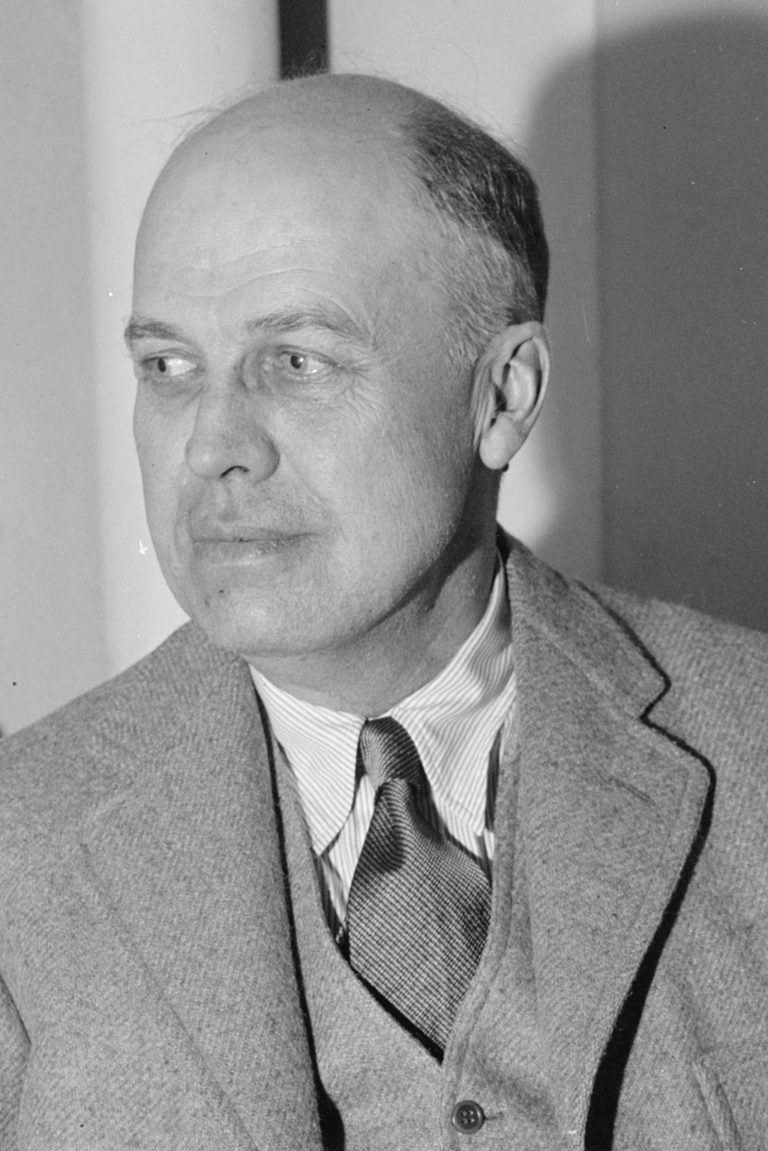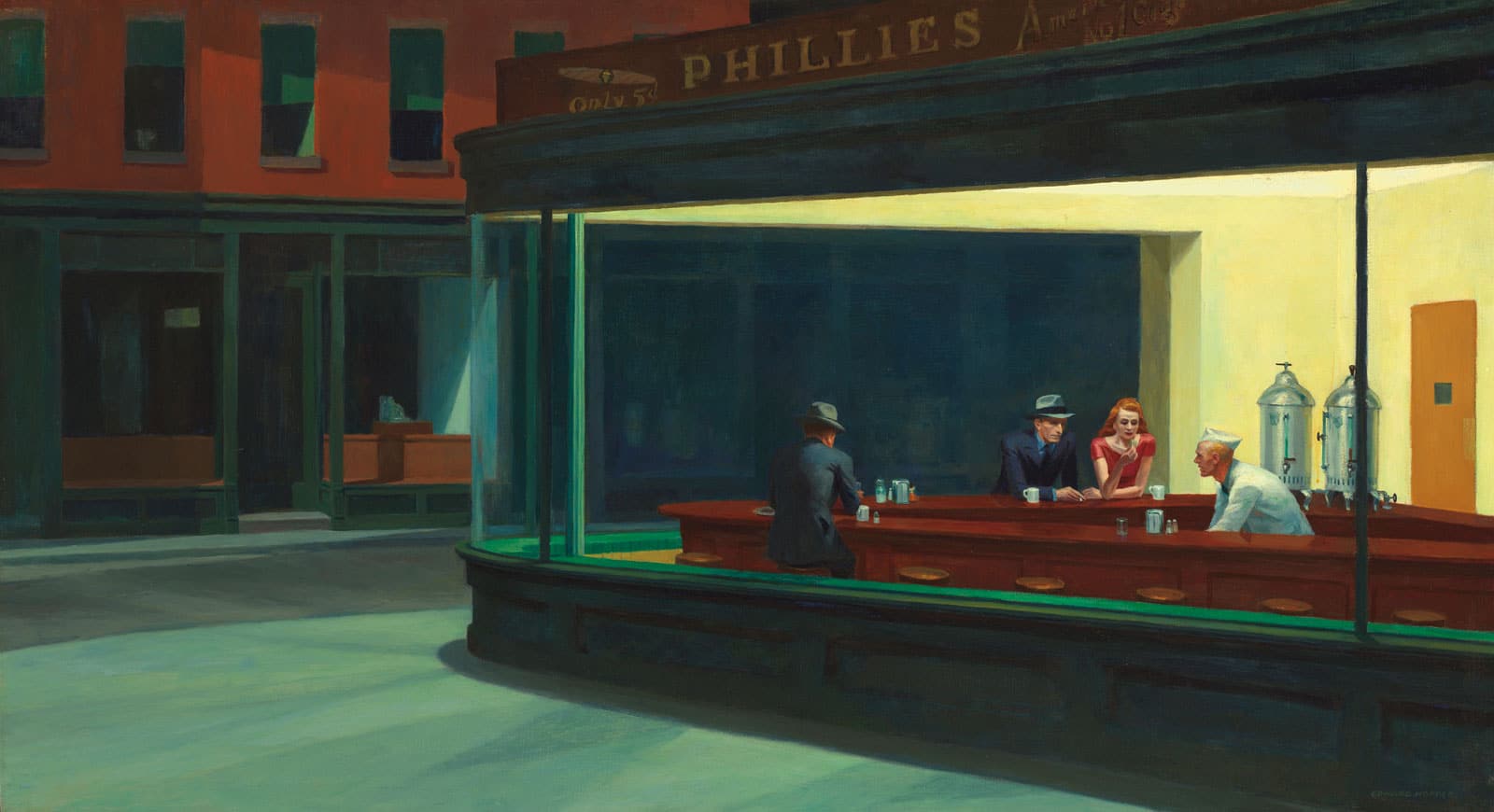Was born into the family of a businessman, owner of a haberdashery store. From childhood, he loved to draw, and both of his parents supported his interests; the family often visited theaters, exhibitions at museums. Edward spent a lot of time on the Hudson River with a notebook and pencils, and this was reflected in the theme of his future work. As a teenager, he built a full-sized boat and was considering a career in naval architecture.
1882 - 1967
Edward Hopper

description
Edward Hopper was an American artist, a prominent representative of genre painting, one of the largest urbanists of the XXth century. Although his work was officially referred to the style of “realism”, Hopper offered such a great look at life between the world wars that he inspired countless artists, photographers, directors, stage designers, dancers, writers and even musicians.
The phenomenon of the artist is confirmed by the term “Hopperesque” that appeared in art history to refer to images that emphasize the isolation of personality in a modern city. Providing a minimum of action, removing almost any signs of movement from the plot and adding dramatic means of representation with striking lighting schemes in claustrophobic spaces, Hopper invited the viewer not to consider but to feel the psychological state of life itself. Thus, the master paved the way for Abstract Expressionism, remaining a traditional artist.
Generations of filmmakers drew inspiration from Hopper’s dramatic views, the lighting and general mood of his paintings – for example, the picture “House by the Railroad” inspired Alfred Hitchcock in “Psycho” (1960), as well as Terrence Malick in “The Days of Heaven” (1978).
Hopper’s revelations appeal to writers and musicians: Joyce Carol Oates used the painting “Night Hawks” for a series of poems, Tom Waits called his album “Nighthawks in the diner”, and Madonna named her concert “Girlie Show”.
Hopper was not a prolific artist – he encountered difficulties in choosing an object, spent a lot of time sorting out the details of the composition, and created numerous sketches. By the end of his life, he completed only two paintings a year. The Hoppers bequeathed their creations to the Whitney Museum of American Art.
The house where Edward spent his childhood is included in the National Register of Historic Places and operates as the non-profit Hopper Arts Center.
The artist Eric Fischl said of Hopper’s influence, “How big the artist can be, we can decide from the time it takes to go through his territory … I’m still on it.” Too many creators to this day are “on the territory”, which was opened by Edward Hopper.
Key ideas:
– In the formation of Hopper’s recognizable creative style, a significant role was played by his studies at Robert Henry’s private school, where the main task was considered to be the birth of personality; its the main principle was “Educate yourself”.
– Having passed the stage of “advertising” creativity experiencing with creating illustrations, Hopper found a special niche in Realism. His images are consistently restrained, and the lack of details encourages the viewer to complete the story himself. This element of Hopper’s art had a major impact on the development of Postmodernism, where viewers were given an important role.
– Hopper usually depicted faces of characters as impassive, detached from the environment. That is how the artist indicated his focus on the isolation of a man in modern life. This manner is indicated by both unmodulated light and the presence of parts immersed in darkness.
– The main inspiration of Edward Hopper was the city of New York and a number of provincial towns. In the plots of his paintings, there is a peculiar image of a specific person or a generalized view of a loner, a kind of “frozen” in his disappointment, devastated urban dweller. Later, the artist created the so-called “portraits of houses” with their clear geometric shapes.
– Many of Hopper’s houses inspired directors: animated by artistic means, separated from the surroundings and illuminated by blanching light, they stand out sharply and cast dramatic shadows.
– Hopper remained faithful to his artistic style until the end of his life, painting, in particular, his photographically verified subjects not only in oil but also in watercolour.
– Artist and writer Burgin said about the pervasive influence of the master, “We do not need to look for Hopper to find him. We may ask if this photograph of Larry Sultan was taken with conscious attention to paintings of Edward Hopper.” You can add that this is a film by a great director, this album or the show is of a famous musician. The term “Hopperesque” means that the creator, consciously or not, sees the world through the prism of paintings by Edward Hopper.
1882
1899
1906
1908
1912
1915
1917 - 1918
1920
1923
1931
1933
1941
1965
Was born into the family of a businessman
Went to New York
He went to New York, studied at the school of advertising artists for a year, then entered Robert Henry’s private school, the main principle of which was the slogan “Educate yourself, do not let others teach you”.
Went to Paris to study
He went to Paris to continue his studies. Also, he visited the cultural centers of Europe, England, Germany, Holland and Belgium, until 1910.
Returned to New York
Returning to New York, took part in an exhibition organized by Robert Henry and his students from the organization The Eight, but was not successful and again went to study in Paris, intending to become a book illustrator.
Went in search of inspiration to Gloucester
Went in search of inspiration to Gloucester, Massachusetts, where he created his first paintings in the open air; a year later, he took part in the infamous Armory Show (“arms exhibition”) in New York and earned $ 250 by first selling the painting “Sailing” (1911), painted over his early self-portrait.
His first engraving
Made his first engraving. Working on advertisements and prints for New York publications under the influence of gloomy French engraver Charles Merion, he came to the central theme of his art – the loneliness of a human being in the world. For some time, the artist joined the American naturalistic “school of the bin”.
The exhibition of the Society of Independent Artists of New York
Participated in the exhibition of the Society of Independent Artists of New York; was honored with the US Maritime Shipping Council Prize for the military poster “Smash the Hun” (1918).
His first solo exhibition
His first solo exhibition was organized by the club of the Whitney Art Studio. Sixteen paintings of the artist were presented – the event had little impact on the difficult life situation, like the second exhibition at the Whitney Studio club in 1922. Painting did not give him a profit, so the artist worked at an advertising agency and prepared illustrations for newspapers.
The artist became known
The best of his 60 etchings brought the artist some fame: he received two awards for them: the Logan Prize from the Chicago Society of Engravers and the V.A. Brian Prize. With the help of Nivison, six Hopper’s watercolours were allowed to be exhibited at the Brooklyn Museum. One of them, “Attic roof”, was acquired by the museum for $ 100. A year later, he married artist Josephine Nivison, almost the same age; she became his model until the end of his life.
He sold 30 paintings to large museums
Large museums, including the Metropolitan, bought his works for thousands of dollars; he sold 30 paintings, 13 from which were watercolours. He bought a house on Cape Cord, where he moved with his wife. Around that time, Hopper discovered a new genre of fine art – the so-called portrait of the house. The new income allowed Hopper to quit his job at an advertising agency.
A solo exhibition of Edward Hopper
The Museum of Modern Art in New York organized a solo exhibition of Edward Hopper, which finally brought the 49-year-old artist immense success and worldwide fame. After that, the artist was admitted to the National Academy of Drawing.
Created his most famous painting, “Night Hawks”
The artist worked productively throughout the war years, in particular, created his most famous painting, “Night Hawks” (1942). Not being a prolific author, he completed no more than two paintings a year in the last decade.
His last painting, The Comedians
Being seriously ill, he created his last painting, The Comedians. Two years later, the artist died; his wife lived after that for another ten months. The couple bequeathed their artistic heritage to the Whitney Museum of American Art.
Edward Hopper
On Artist
flow
Impressionism
Realism
Modern
friends
Rockwell Kent
Robert Henry
George Bellows
artists
William Merritt Chase
Charles Marion
Edgar Degas
Edward Manet
Rembrandt van Rijn
By Artist
flow
Abstract expressionism
friends
Rockwell Kent
artists
Mark Rothko
George Segal
Banksy
Ed Ruscha
Tony Oursler
Richard Diebenkorn
Eric Fischl
Victor Burgin
description
Edward Hopper created his urban landscapes of the 1920s (mainly views of New England), carefully choosing the object. A three-story Victorian house with a characteristic attic stands on a raised platform and is cut off from the viewer and the whole world by sharp horizontal railway tracks. The author intrigues the viewer even more by closing the windows with curtains. There is no possibility of contact between those who live inside and other people.
1925

